By Louis Ciotola
Ivan IV Vasilyevich, first czar of all the Russians, has gone down as one of history’s most notorious despots, infamous for the terrors he carried out among his subjects. Less well known are the numerous and bloody wars he fought to expand his realm. Isolation on the bleak steppes of Eurasia was a fact of life for the state of Muscovy. Wanting to lead his people to prosperity, Ivan’s determined eyes gazed westward toward the Baltic, where he could open his realm to European trade and forge an empire worthy of his crown. In the end, the war he waged there would last a quarter century, consuming his reign and becoming nothing short of an obsession. By the time it was over, Ivan had earned a new title to go along with that of czar: “Ivan the Terrible.”
Expanding Russia to the Sea
Generations of Muscovite rulers had dreamed of expanding their principality to the sea, but by the mid-16th century Muscovy was yet to possess a port on northern waters. Ivan’s grandfather, Ivan III, upon his conquest of the Republic of Novgorod in the 1470s had inherited a narrow slice of territory where the Neva River flowed into the Gulf of Bothnia. There he constructed the fortress of Ivangorod, opposite the wealthy Livonian city of Narva. Lying too far inland, Ivangorod never became a commercial success. By the time of Ivan IV’s coronation in 1547, Muscovy was still geographically and economically isolated.
Muscovites could be forgiven for feeling paranoid about their landlocked entrapment; their Baltic neighbors gave them every reason to be. The regional powers of Denmark, Sweden, and Poland-Lithuania feared the growth of Moscow. To them, Muscovy was a mysterious and superstitious land whose alien form of Orthodox Christianity was contemptible. While Muscovy sought direct contact with the West by way of the sea, its neighbors worked to prevent it through a virtual blockade whereby Western goods and technology, especially weapons, could not reach Ivan’s lands. Occasionally, the blockade led to war. Poland-Lithuania fought to maintain Muscovy’s isolation until a truce in 1532, while Sweden briefly warred with the Muscovites until 1557. The ensuing peace treaty brought a Swedish pledge to refrain from participating in any future coalitions against Muscovy. This provided Ivan with the flexibility to turn elsewhere for conquest: the fledgling state of Livonia.
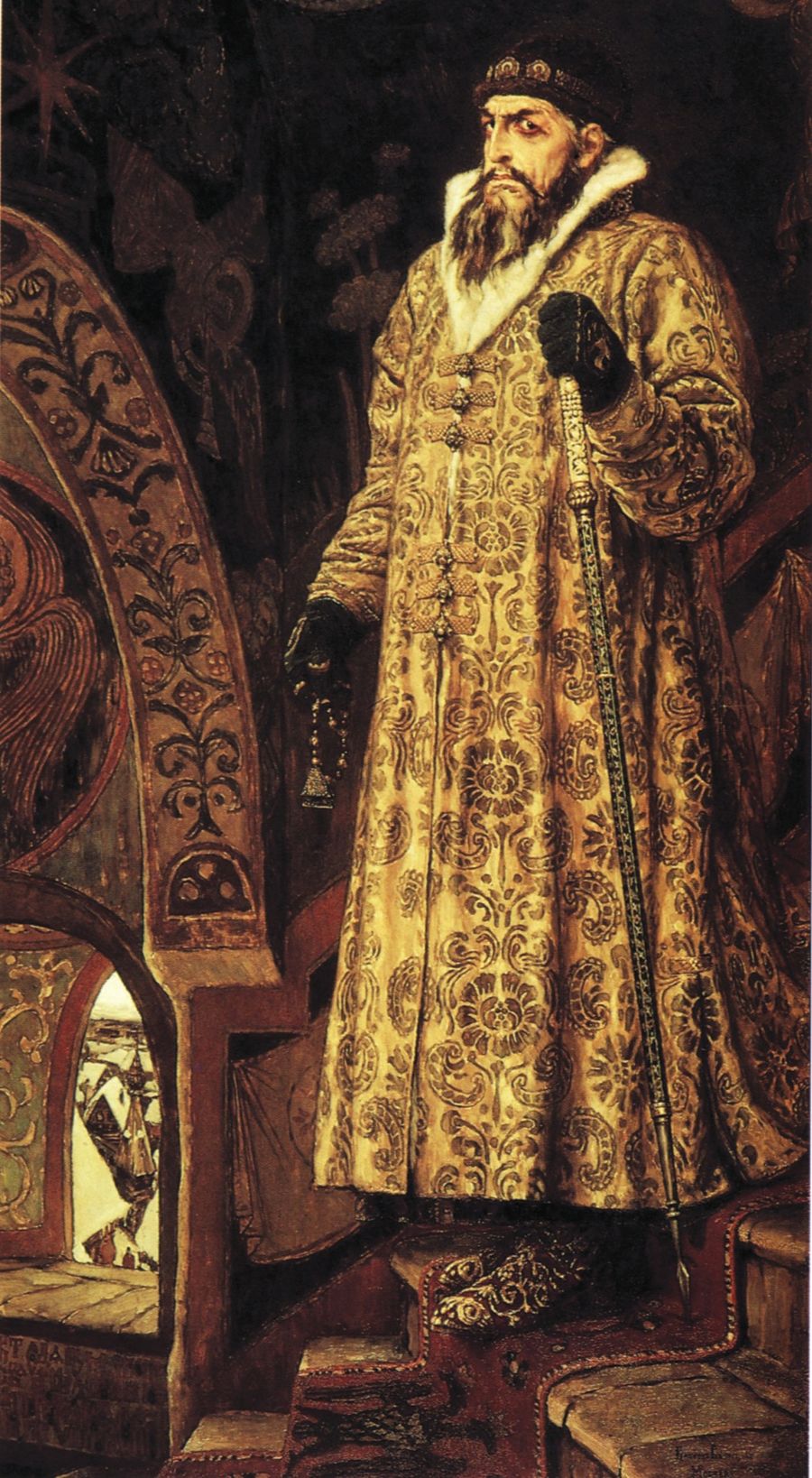
The Crumbling Livonia
A patchwork of commercial cities spread out through modern-day Latvia and Estonia, Livonia was the most prominent economic menace to Muscovy. The Livonians were middlemen in the trade to Ivan’s lands, and their high tariffs crippled Muscovite growth and limited trade. Ivan understood that the prosperity of his new empire relied on the demise of the independent Livonian states. As it turned out, time was working in his favor. The Hanseatic League, an organization of northern trading cities to which Riga, Reval, and Narva belonged, had long passed its heyday. The growth of cohesive states, most significantly Denmark, doomed the Hanse, whose resources simply could not compete with more modern states. Furthermore, Livonia’s other prominent power, the Livonian Order of Knights, was also suffering rapid decline. Created centuries before for the purpose of converting the heathen peoples of the eastern Baltic, by the mid-16th century the order’s largely Protestant German knights had settled into luxurious complacency as estate holders. The demise of their energy heralded the accompanying decline of their significance and military strength as well.
In 1558, the order held some 60 castles, while independent cities, notably Riga and Dorpat, controlled roughly 50 more. Although often well armed with the latest in gunpowder technology, the fortresses were also obsolete and severely undermanned due to an overemphasis on mounted soldiers. Livonia was falling apart, and powers like Sweden and Lithuania were plotting to collect the spoils of its inevitable disintegration. Ivan, whose personal stake in Livonia’s fall was higher than anyone’s, was determined to grab his just desserts.
“Here is a Little Thing That Will Grow Great”
An invasion required an air of legitimacy. For that Ivan turned to the Livonian city of Dorpat, which he claimed owed Muscovy 50 years’ worth of tribute dating back to a treaty signed in 1503. When pressured, Dorpat demurred and attempted to negotiate a reduction in payments. Soon afterward, the Bishop of Dorpat delivered a letter of protest to the Muscovite ambassador, who replied prophetically, “Here is a little thing that will grow great.” Within a short time, the Livonians caved in and promised to pay the tribute in full, but when their embassy arrived in Moscow empty handed, they effectively gave Ivan all the justification he needed to invade. On January 22, 1558, the Muscovite army crossed into Livonia.
Despite the best efforts of the Baltic powers, the Muscovite army was equal to its closest rivals technologically and militarily. Like the Livonians, the Muscovites relied heavily on cavalry, which in their case was a feudal levy provided by landholders as a condition for keeping their estates. Much of the infantry was formed in a similar fashion with the exception of the streltsy, a hereditary division of musketeers. Initially the streltsy was a mere 3,000 strong, but within only a few years would swell to over 15,000 men. Reinforcing the Muscovites was a large contingent of Cheremis, Circassians, Bashkirs, and Kazan Tatars who fought as vassals. The savage Tatars were particularly adept at instilling terror in the hearts of their enemies.
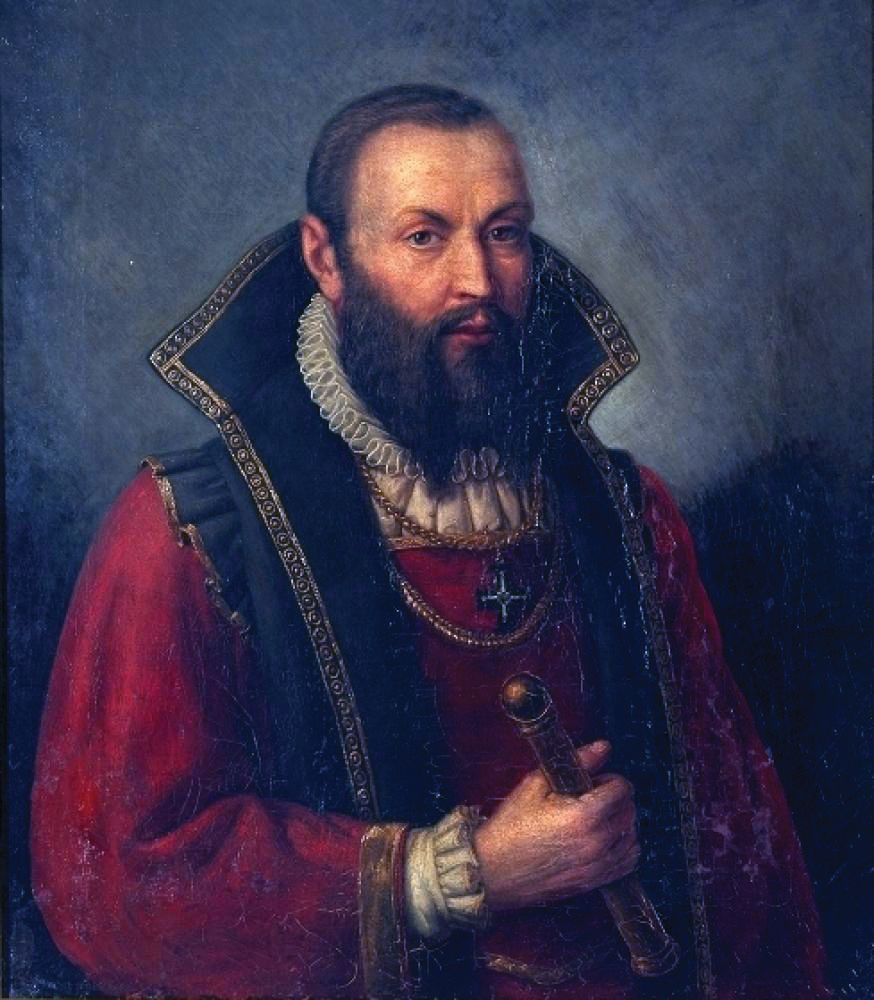
Ivan the Terrible’s Invasion of Livonia
The 40,000-strong Muscovite army entered Livonian territory near the town of Neuhausen. Its three columns were jointly commanded by Ivan’s uncle, Mikhail Glinsky, and the Khan of Kazimov, Shah Ali, who led the 7,000-man Tatar contingent. Ivan’s close friend, Andrey Kurbsky, led the rear guard. Initially, the Livonians believed that the czar had come only to collect his tribute, but when Ivan refused an envoy who belatedly brought the tribute they quickly realized that it had all been a pretext. Ivan’s primary objective was not Dorpat but Narva, his window to the sea. In the meantime, the Muscovites bypassed or isolated the fortresses in their path and concentrated on looting the countryside to fuel their advance. Livonian towns were temporarily spared, but their fields were laid to waste.
The Muscovite army immediately commenced bombarding Narva upon reaching the city in early May. Defenders hunkered down and prepared for a long siege while sending out pleas for help in every direction. Reinforcements from Reval and Fellin soon arrived, but such gestures of defiance only enraged Ivan. On May 11, a large fire broke out in the center of the city that the Muscovites would later claim was caused by the attempted burning of two religious icons that, despite being the center of the conflagration, miraculously survived. The besiegers used the ensuing chaos as cover to successfully storm the walls and capture the city.
With Narva safely in his hands, Ivan next turned to gobbling up the rest of Livonia. Syrensk and Neuhausen capitulated without much trouble, and on July 19 Dorpat surrendered to Ivan’s Tatars in exchange for guarantees of its traditional liberties and trading privileges. The deal was greatly facilitated by the restraint shown by the Tatars, whom Ivan forbade to pillage the city. All across Livonia peasants were rising against their German masters, something the czar was keen to encourage through demonstrations of his benevolence. The lack of popular resistance enabled the Muscovites to raid as far inland as Riga. Before the close of the year, some 20 fortresses lay under their control.
A Six-Month Truce
The Livonian Order and remaining independent cities frantically begged for assistance from anyone who would listen, but their pleas produced very little. The Hanse was in no position to aid its fellow cities, and the Holy Roman Emperor offered nothing beyond his sympathies. Gotthard Kettler, elected as the new Grand Master of the Order, petitioned Poland-Lithuania for help, but King Sigismund was reluctant to intercede for fear of inciting a conflict with Sweden or Denmark. Sweden, meanwhile, showed interest in replacing the Livonians as the middlemen in the Muscovite trade, which was now flourishing out of Narva. King Gustav Vasa played a delicate game of placating Ivan while attempting to curb Muscovy’s improved trading conditions. It was not until early 1559 that the Livonians at last received a glimmer of hope when King Frederick II of Denmark volunteered to mediate a truce.
It was not a moment too soon. The Muscovites, having crossed the Dvina River, were rampaging through Courland and closing in on Riga. Ivan was in no mood for a truce, but the czar’s chief adviser, Alexei Adashev, implored him to accept the Danish offer, fearing Tatar activity along Muscovy’s southern border. Having failed the previous summer to coax Sigismund into an alliance, Ivan worried that a Baltic coalition was forming against him, although Sigismund’s rejection was a direct result of Ivan’s exorbitant stipulations rather than any plans of his own to attack. Grudgingly, Ivan agreed to a six-month truce in May 1559, even though the order’s refusal to come under his suzerainty and Denmark’s empty yet annoying claim to Livonia as a Danish dependency left a bitter taste in his mouth.
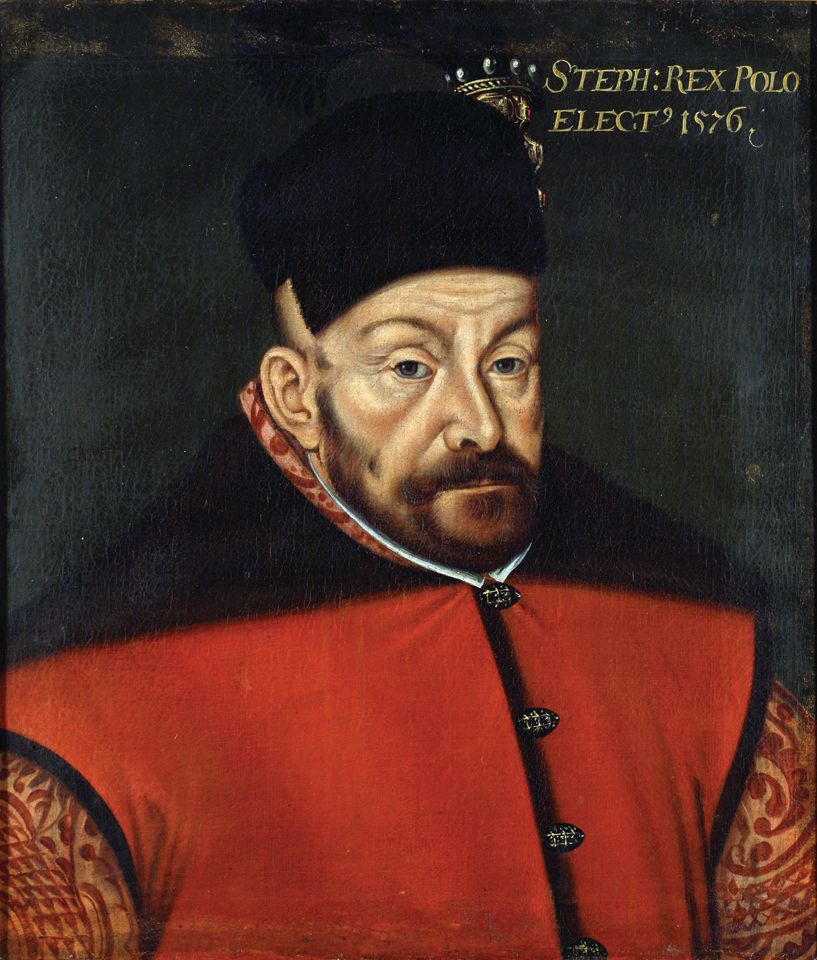
Breaking the Truce
The Livonian Order had been reeling, but the truce unexpectedly bought it precious time that Kettler put to good use. On August 31, he and the Archbishop of Riga signed the Treaty of Vilna establishing Livonia as a Lithuanian protectorate. Lithuanian troops promptly marched north to occupy southern Livonia from Riga to Dünaburg. Poland remained uninvolved, although Sigismund mocked Ivan’s supposed conquest by inquiring, “What ruler concludes a treaty with his own subjects?” The sentiment was to prove premature.
Emboldened, Kettler treacherously violated the truce one month before its expiration with an offensive into Muscovite-occupied territory. The surprise caught Ivan at a particularly bad time—his beloved wife, Anastasia, was showing the first symptoms of the illness that would soon kill her. News of the defeat of one of his armies by the order only incensed him further. Kettler had overplayed his hand. Without direct Lithuanian support, he had little chance of success. Following a poorly orchestrated siege of Dorpat, the Livonian knights withdrew.
Battles at Ermes and Fellin
Although many of Muscovy’s best soldiers had since been transferred south to face the Tatar threat, as 1560 dawned the weakness of the Livonian Order all but guaranteed the success of a counteroffensive. Marienburg fell in February; Weissenstein followed in March. The offensive continued with ruthless efficiency until, on August 2, it reached its glorious climax. In an attempt to break the ongoing siege of Fellin, a band of a few hundred knights under Philip von Bell rode forth at Ermes to challenge the entire Muscovite army of Prince I.F. Mstislavsky, which numbered in the thousands. Predictably, Mstislavsky crushed the suicidal force and captured Bell.
Three weeks later Fellin surrendered. Its impressive collection of 450 cannons, although formidable, could not halt the inevitable. The Livonian Order’s military power abruptly ceased to exist. Ivan forced the defeated knights to take part in a humiliating parade through the streets of Moscow. In an audience with the czar, Bell complained, “You are attempting to conquer our fatherland in a bloody, unjust way.” When he went on to question the czar’s Christian morals, it proved a step too far. Ivan ordered him tortured and executed. The recent death of his wife left him with little patience to spare his enemies—or, as it would soon become clear, his friends.
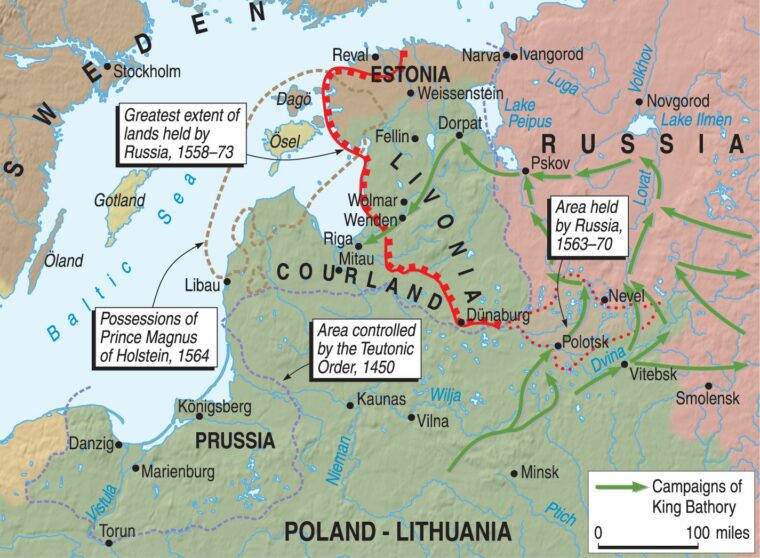
Opportunism in the Northern Seven Years’ War
The victories at Ermes and Fellin, although spectacular, proved insufficient to give Ivan complete control of Livonia. Time had run out. Muscovy’s Baltic rivals began moving in to grab up whatever Livonian territory the czar had yet to occupy. The Treaty of Vilna aside, Denmark was the first to step in. In 1559, Frederick purchased the Livonian bishopric of Ösel-Wiek, which he granted to his brother Magnus the following year in exchange for Holstein. Magnus intended the deal to be the first step in establishing his own Livonian kingdom. The new king of Sweden, Erik XIV, made the next move in May 1561, when he agreed to protect Reval in return for its suzerainty to the Swedish crown. Erik planned to use Reval to control the flow of trade into Muscovite Narva. A few months later, Swedish forces moved south and occupied Pernau, Padis, and Leal, claiming all of Estonia as their own.
Meanwhile, Sigismund arrived to absorb what was left of Livonia into the Grand Duchy of Lithuania. Kettler solidified his allegiance by secularizing the order and creating his own duchies in Courland and Semigallia under Lithuanian protection. Then, in March 1562, Riga agreed to Lithuanian protection as well. With that, any semblance of Livonian independence was gone forever.
Tensions still stirred beneath the surface between Denmark, Sweden, and Poland-Lithuania regarding trade with Muscovy. In 1563, the feuding became dynastic when Erik imprisoned his brother Johan shortly after the latter married Sigismund’s sister, Catherine. A harsh opponent of Muscovy, Johan had threatened Erik’s work in Livonia by exchanging funds for castles with Poland. As a result, the king ordered his arrest. Within a matter of months events boiled over into what became known as the Northern Seven Years’ War, pitting Poland and Denmark against Sweden. Ivan was left free to take advantage of his rivals’ distraction.
Cruelty at Polotsk
The czar chose Lithuania as his next target, accusing it of conspiring against him with Crimean Tatars. His pretext established, Ivan crossed the border with an army of 50,000 men in November 1562. Ivan’s primary goal was the capture of Polotsk, the key to dominating both the Western Dvina and the road to Riga. Although Ivan was present during the initial stages of the campaign, the Muscovite army was officially commanded by I.V. Sheremetev and I.M. Voronstov. Despite virtually no Lithuanian resistance along the march, the army moved slowly, often becoming confused in the thick forests. At one point, an exasperated Ivan took out his frustrations on a prince by beating the poor man to death with a mace. Nevertheless, on January 31, 1563, the Muscovites safely reached their destination and made preparations for a siege.
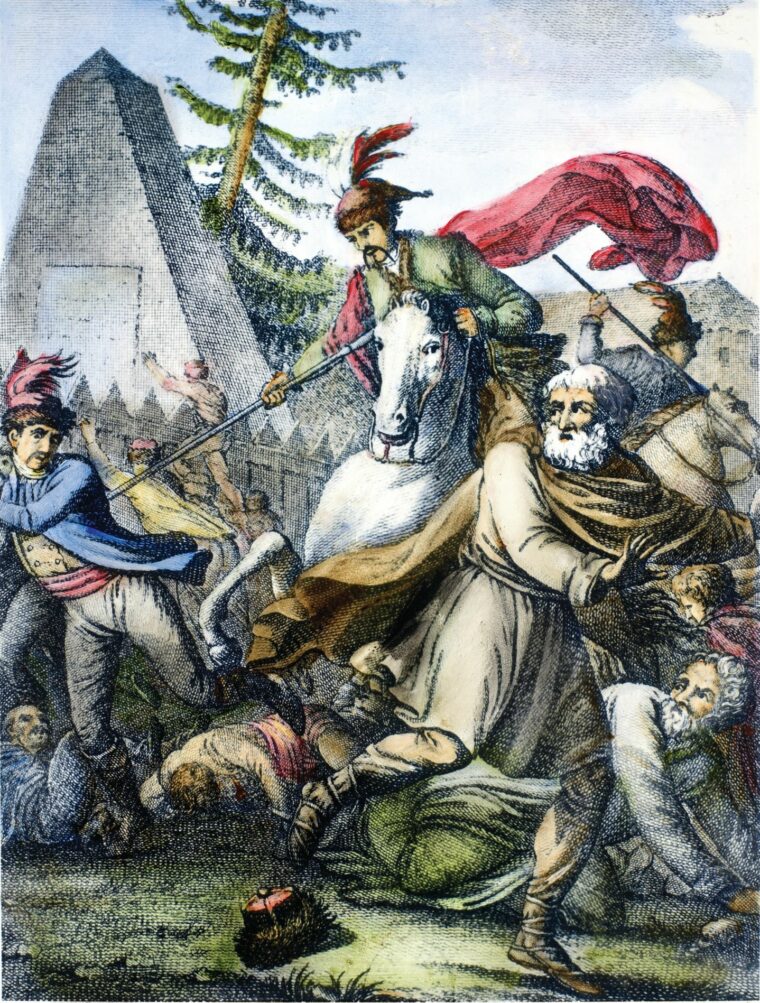
The siege of Polotsk was a brilliant demonstration of the growing sophistication of the Muscovite army. Surrounded by an overwhelming force, the defenders and their mercenary allies had little chance of successful resistance even though their fortress was more formidable than most. The Muscovites and their Tatar auxiliaries came supremely prepared, bringing with them preconstructed siege towers, ample provisions, and three artillery units that, along with musketeers, they strategically positioned on a small island on the Dvina to provide cover fire for the assault.
On February 15, a fire erupted in the center of Polotsk, although this time the culprit was artillery fire rather than allegedly divine intervention. The Muscovites seized the opportunity to storm the city. Their hopes dwindling, the defenders held out for another week before surrendering the citadel. Ivan had previously sworn to uphold the traditional liberties of the citizens, but upon its capture he went back on his word and drowned 300 local Jews in the Dvina after they refused to convert to Christianity. The czar was steadily building a reputation for unprecedented cruelty.
Ivan’s Madness
The capture of Polotsk proved to be the pinnacle of the Lithuanian campaign. On January 26, 1564, the Muscovite army suffered a major reverse at the River Ula, convincing Ivan more than ever that traitors were among the Muscovites. One presumed traitor was his intimate friend Kurbsky, whom the czar accused of plotting the death of Czarina Anastasia. Kurbsky, already banished to Dorpat, fled to Lithuania. Writing to Ivan from exile, Kurbsky criticized the czar’s homicidal behavior and attested to his own past loyalty. Naturally, Ivan denied the charges. He and Kurbsky continued to swap insults and accusations.
Meanwhile, events in Lithuania were going from bad to worse. In 1565, the Muscovites were again defeated at the Battle of Chashniki. Ivan became thoroughly distracted by activities at home, particularly those of his new secret police, the Oprichnina. His descent into madness was complete. The opportunity to exploit the ongoing northern war vanished in a sea of chaos.
Several years of relative quiet followed on the Livonian front while Ivan obsessed over domestic enemies and the Baltic powers fought among themselves. Then, in September 1568, the balance shifted suddenly when Swedish noblemen overthrew King Erik, who had become a somewhat milder version of Ivan, and replaced him with his brother Johan. Johan immediately concluded a peace with his brother-in-law Sigismund and changed policies to one hostile toward Muscovy. He also gradually wound down the war with Denmark, and the two kingdoms agreed to an armistice in November 1570.
Even more drastic changes were occurring on the southern coast of the Baltic, where it had become apparent that Sigismund was approaching the end of his life. Increased urgency arose to establish a firm bond between his Polish and Lithuanian realms. On July 1, 1569, the two states merged in what became known as the Union of Lublin, creating a force far stronger than that with which Ivan had previously had to contend.
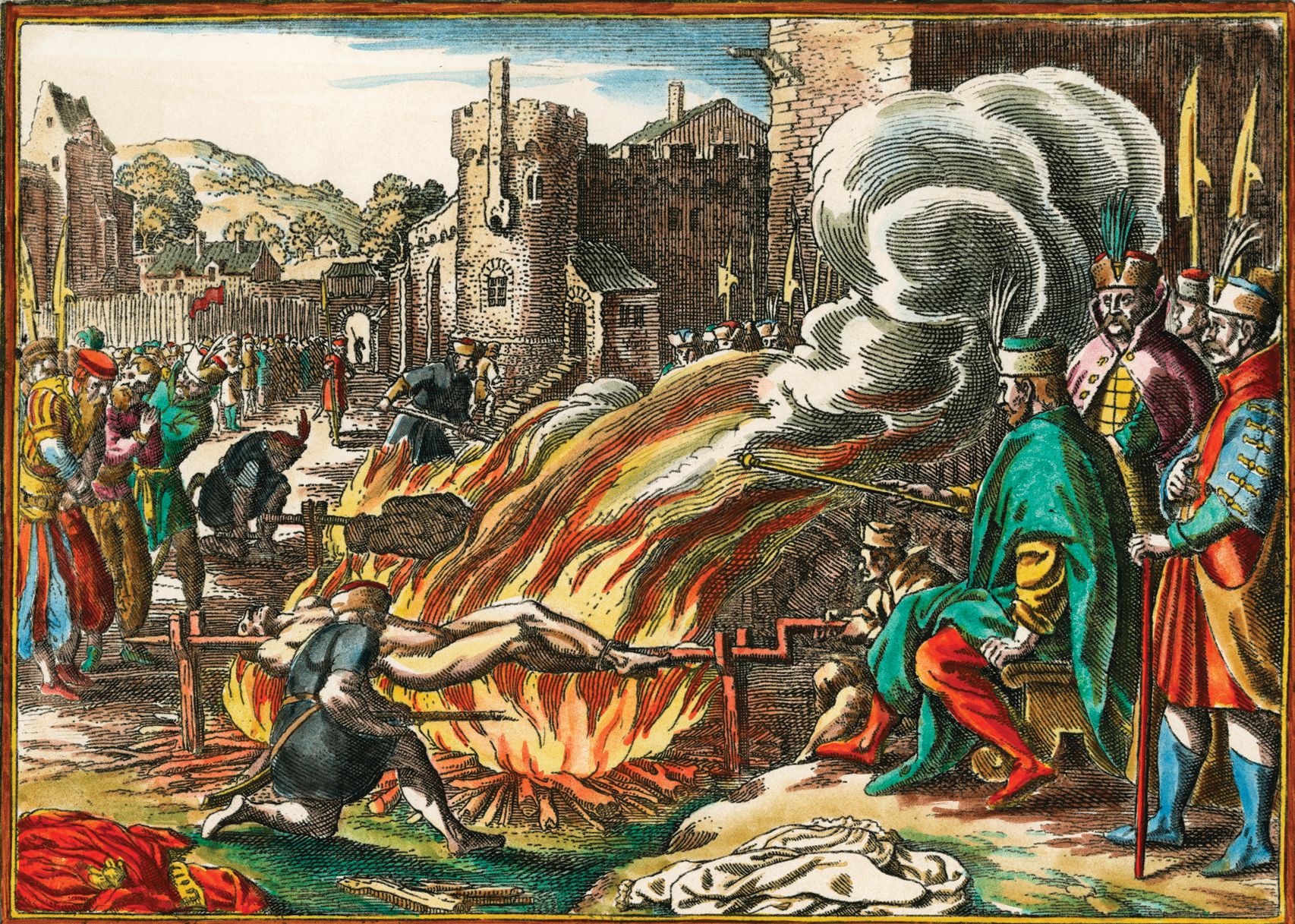
The Threats Along Ivan’s Borders
Ivan was quick to recognize the new Baltic dynamics. He condemned Johan, refusing to even acknowledge Sweden’s growing influence, and ordered physical abuse upon the Swedish embassy in Moscow in retaliation for a similar incident involving Muscovite envoys in Stockholm. In stark contrast, he signed a new truce with Poland-Lithuania in June 1570. Despite its strengthening union with Lithuania, Poland needed peace to prepare for royal elections, which would occur upon Sigismund’s inevitable death. Ivan, for his part, entertained the idea of presenting himself as a candidate for the Polish throne and was thus willing to relinquish his claim on Riga in order to participate in the upcoming election.
In the meantime, unabated political turmoil and an increasing Tatar threat at home prevented Ivan from directly engaging Sweden. He therefore pursued a strategy whereby a proxy would continue his work in Livonia, eyeing Frederick’s brother Magnus for the role. With Frederick’s blessing, the ambitious Magnus eagerly traveled to Moscow in June 1570, where the czar crowned him king of Livonia, sealing the alliance by granting his daughter’s hand in marriage.
In what proved to be a critical miscalculation, Ivan also provided Magnus 25,000 troops with which to take Reval. Reaching the city was easy enough, but Magnus could not prevent the Swedes from reinforcing the garrison by sea. Nor could he expect further help from his brother, who was moving to conclude hostilities with Sweden rather than escalate them. Furthermore, the arrival of winter worked against Magnus; a favorite tactic of Reval defenders was to ice over walls to make them impossible to climb. In March 1571, with no Muscovite reinforcements forthcoming, Magnus abandoned his pitiful siege and returned home.
The czar could offer Magnus nothing more than his best wishes. The Oprichnina experiment had so weakened his state that a Tatar raid was able to do the unthinkable—penetrating as far north as Moscow and setting the city ablaze. Although Ivan soon regained control of the situation, the experience of seeing his own capital violated was so shocking that it awakened him to the folly of his recently disastrous policies. He abruptly disbanded the Oprichnina and plotted the restoration of his martial glory by completing the conquest of Livonia.
Invading Livonia Anew
The czar’s triumphant return to Livonia began on Christmas Day 1572 with an invasion of Estonia. With Johan’s forces suffering from chronic lack of pay and diminished spirits, the Muscovites carried all before them. The first major town to fall was Weissenstein, on New Year’s Day 1573, after which Ivan ordered the fortress commander roasted alive as punishment for having to recapture the same cities over and over. It soon became apparent that the effects of years of misrule could not simply be roasted away. As the czar’s treasury dwindled, the offensive slowed to a crawl.
It was not until 1575 that the Muscovites took Pernau, and a renewed siege of Reval was thoroughly unrealistic. As it was, both Ivan and Johan desperately needed a respite, and they agreed to a two-year truce. In the meantime, Ivan worked to revitalize his war machine by moving against the Danes in relatively undefended Wiek. The province fell easily, and the Danish envoy in Moscow officially signed away future claims on the territory, thus effectively ending any Danish say in the fate of Livonia.
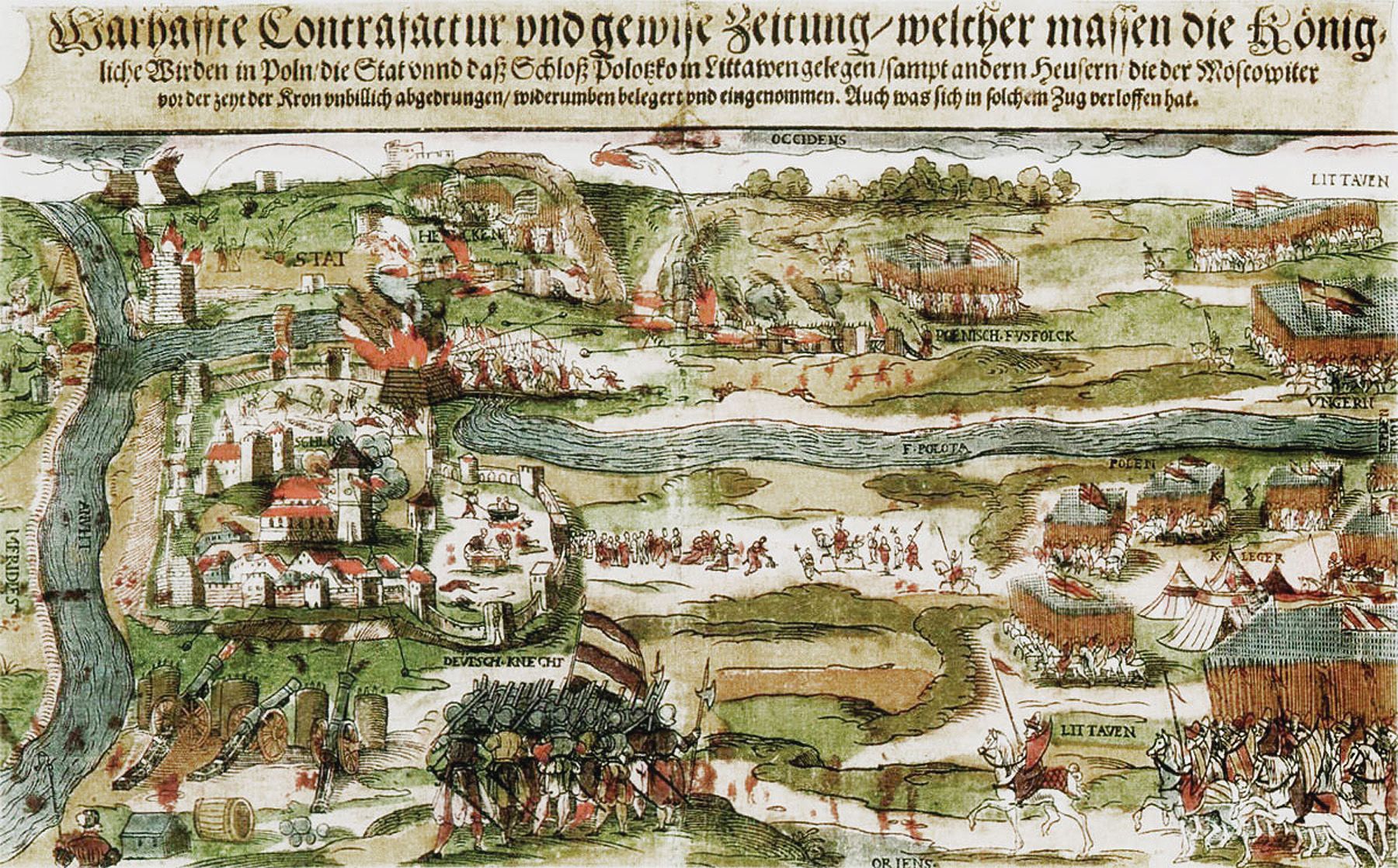
The Pinnacle of Ivan’s Power
In July 1577, Ivan led a reinvigorated Muscovite army of 30,000 men into Lithuanian Livonia. Marching with him was Magnus, whom the czar had decided to reinstate as king of Livonia. Within a short time, the Muscovites reached Wenden, where a cannonball nearly struck Ivan. Rather than meet the horrific fate in store for them, 300 men, women, and children blew themselves up within the fortress before its capture. Meanwhile, Magnus captured the cities of Wolmar and Kokenhausen with barely a shot fired. Given Ivan’s bloody reputation, townsfolk were quick to surrender to Magnus in the hopes he would protect them.
Perhaps made delusional by the ease with which he conquered, Magnus became too independent minded for his own good. Boldly, he dared to act as a true king instead of Ivan’s puppet, informing the czar that his conquests were in fact his own. Infuriated by such insolence, Ivan advanced on Kokenhausen, sacked the town, and executed the entire garrison. Even this example fell short of making the desired point to Magnus. Rather than accept his intended role, Magnus now wrote to Ivan demanding a halt to the brutal Muscovite offensive. In response, the czar marched on Wolmar and executed much of its garrison as well. This time Magnus took the hint and fled to Ösel.
Ivan’s 1577 campaign was magnificently successful, the only setback being the Lithuanian recapture of Dünaburg, which was liberated after the besiegers managed to tempt the defenders with barrels of wine and then scaled the walls once Ivan’s troops had become intoxicated. The czar was unaware for the time being that he had reached the pinnacle of his power. Poland-Lithuania had a new king, one who would prove to be a much more formidable adversary then any Ivan had faced thus far.
Stefan Bathory’s Offensive Against Muscovy
Following a period of confusion, the newly united nation settled on Transylvanian prince Stefan Bathory as its monarch. Bathory, whose martial experience was already extensive, was no friend of Muscovy. He refused to even consider Ivan a real czar, referring to him only as a grand prince. He intended to forcefully contest Muscovy’s hold on Livonia. Well supplied with finances and an army of Germans, Hungarians, Cossacks, Tatars, Livonians, Poles, and Lithuanians, Bathory demanded all of Muscovite-controlled Livonia as the price for peace. Naturally, Ivan refused, laying down massive terms of his own, including possession of the important city of Kiev.
Before Bathory’s new army even took the offensive, the tide was turning in his favor. A Polish force recaptured Wenden in early 1578. Ivan called for reinforcements in the late summer and placed Wenden under siege. Both Poles and Swedes were present, and for the first and only time in the war the two unofficial allies fought side by side. In September, they struck back against Ivan’s 18,000 beseigers, driving the Muscovite cavalry from the field and leaving the infantry helplessly exposed in their trenches. The resulting massacre was tremendous. A third of the Muscovites perished. Artillerymen blew themselves up with their own cannons to escape capture and torture. Soon, Barthory was entertaining fantasies of conquering Muscovy itself.
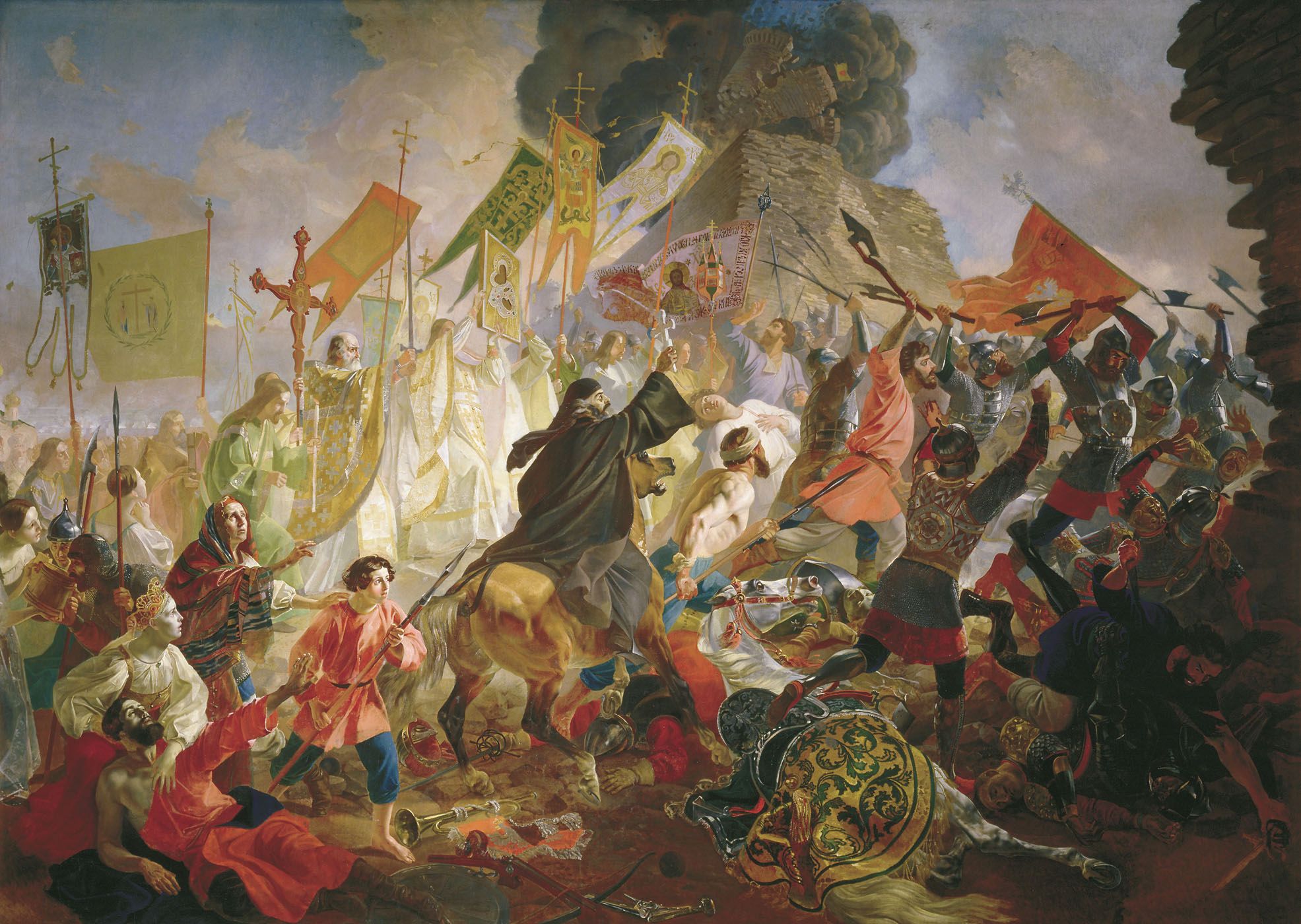
Bathory formally declared war on June 26, 1579, adding a personal challenge for Ivan to face him in mortal combat. The czar declined, deciding to meet his adversary under less romantic circumstances on the battlefield. His army of 40,000 men was significantly smaller than Bathory’s 60,000-man force, but fortified positions within ravaged Livonia held some advantages. The Polish king devised a strategy to avoid further deprivation in Livonia by driving north to cut off the Muscovites. The threat to his homeland would force Ivan to withdraw and subsequently allow the Poles to liberate Livonia with minimal resistance.
The Polish March on Pskov
The Muscovites were completely unprepared. Reflecting Ivan’s assessment that Bathory’s troops were nothing more than “a small army of volunteers,” his forces were spread out all over Livonia. When the Polish campaign commenced in July, the czar, confused and indecisive, chose to divide his forces to cover Polotsk, Nevel, and Smolensk rather than await events with one strong army. As it turned out, one of his guesses was correct. Although the Poles were indeed marching on Polotsk, the Muscovite detachment was inadequate to stop them. The enemy simply pushed it aside, approached the walls of Polotsk, and commenced its bombardment on August 11. Three weeks later, the city capitulated. A Polish officer said later that he had “never seen so many corpses together.”
The relentless Polish advance rapidly erased more than 20 years of Muscovite rule. The Poles forced the surrender of fortresses throughout Livonia while raiding deep inside Muscovy itself. Ivan became so desperate for a truce that he requested papal mediation, but the pope’s intercession was not enough to bring Bathory to the negotiating table. In the summer of 1581, the king crossed the Muscovite border. His sights were set on Pskov, a city of 20,000 surrounded by thick walls and moats and guarded by a 16,000-man garrison.
While separate detachments raided Starodub, Tver, and Novgorod, which burned its own suburbs to deprive the enemy of them, Barthory’s main army advanced on the primary objective. The siege that was to climax the entire Livonian War began on August 25. Once again, Ivan could do little but await events. The entire population of Pskov mobilized in the defense of their city. The garrison’s commander, Ivan Shuisky, swore to defend it to the death. The atmosphere was thick with religious fervor. It was even purported that the cannons had been placed through the intercession of the Virgin Mary. If Bathory wanted Pskov, he would have to pay dearly for it.
“Sire, We Shall Dine With You Tonight in Pskov!”
The Poles commenced their bombardment on September 7. “Sire, we shall dine with you tonight in Pskov!” one officer boasted. But the Muscovites were too determined to collapse so easily. They drove back the first Polish assault, which only managed to capture two bastions, and subsequent attacks against the walls met with even less success. The Muscovites gave as good as they got, cunningly destroying every sapping tunnel and raining down return fire on the attackers’ heads. As September turned into October, Bathory grew nervous. His ammunition was running low—some of it was destroyed in an accidental fire—and an early winter threatened to make remaining in the field intolerable.
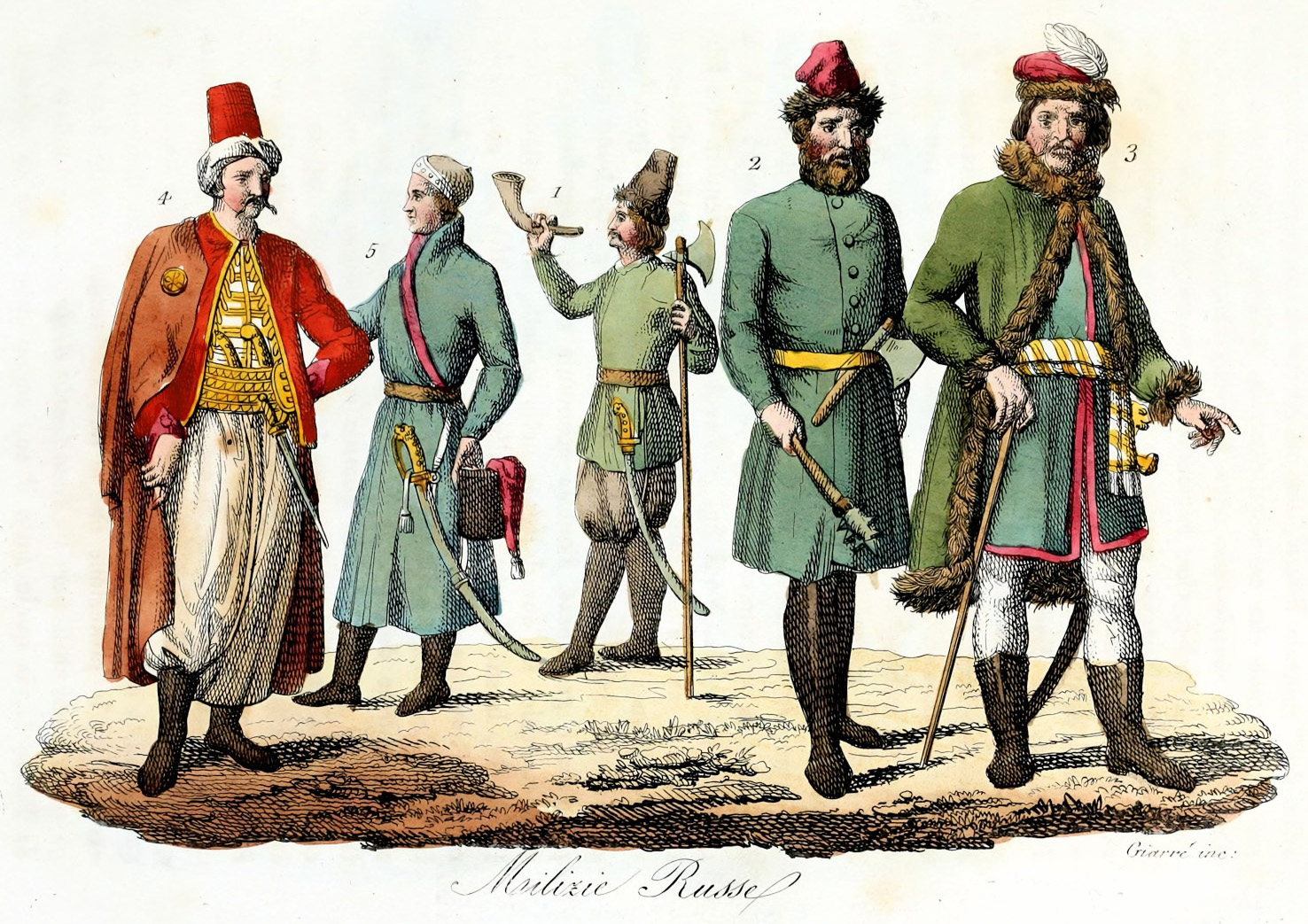 Ivan too was feeling an increased sense of urgency. News from the north was grim. The Swedes, now led by the French mercenary Pontus de la Gardie, were running rampant through Ingria and Karelia; the entire Gulf of Finland was in their hands. At the height of the bloodletting at Pskov, word filtered in that Narva had fallen. Nothing could have been more disastrous. With the Swedes unchallenged and threatening Novgorod, the Poles had to be stopped at all cost.
Ivan too was feeling an increased sense of urgency. News from the north was grim. The Swedes, now led by the French mercenary Pontus de la Gardie, were running rampant through Ingria and Karelia; the entire Gulf of Finland was in their hands. At the height of the bloodletting at Pskov, word filtered in that Narva had fallen. Nothing could have been more disastrous. With the Swedes unchallenged and threatening Novgorod, the Poles had to be stopped at all cost.
On October 28, Bathory launched an all-out assault on Pskov. A detachment of soldiers advancing in the old Roman tortoise formation crept forward in the direction of one of the corner towers to dig a ditch and undermine its foundation. The town’s defenders poured down boiling tar on the attackers, who broke and fled in utter agony. Bathory ordered a second attack, but it too met with disastrous results. A few days later, on November 2, he tried one final time. When this too failed, he sent word to the Muscovites that he was willing to negotiate.
Ivan Left Empty Handed
The two sides met to discuss terms with the papal meditators at Yam Zapolsky. Even after their failure to take Pskov, the Poles unmistakably maintained the upper hand. Bathory, not convinced the war was over, returned to Poland to beg the Diet for more funds, leaving behind a subordinate to conduct negotiations and contend with an army that was nearing mutiny.
For his part, Ivan was desperate for peace. After decades of war and domestic upheaval, Ivan’s kingdom risked total collapse if it did not find some relief. The terms for such relief were harsh. In exchange for a 10-year truce, Poland demanded Muscovite recognition of Polish suzerainty over central and southern Livonia. On January 15, 1582, Ivan caved in to all the Polish demands. Bathory, who could hardly turn down such an advantageous peace, abandoned his efforts to continue the war.
Peace with Sweden came the following summer, and Ivan made no attempt to recapture Narva. Ivangorod too was lost, with no chance of being regained through negotiation. Sweden, barely a factor in the eastern Baltic prior to 1558, was now a full-blown empire that would prove to be a thorn in Russia’s side for the next 120 years.
Twenty-five years and countless lives later, Ivan’s invasion of Livonia had achieved nothing. The war that was meant to open up the new Russian empire instead reinforced the isolation of old Muscovy. A year later, in 1584, Ivan died, leaving behind an exhausted state and ushering in a period of political turmoil that Russians would remember as “the Time of Troubles.” But Ivan the Terrible’s failure in Livonia did not permanently discourage his fellow Russians. Rather, his territorial ambitions would remain a fundamental element of the Russian character until, a century later, another czar, Alexis, fulfilled Ivan’s dream of a permanent window on the Baltic Sea.
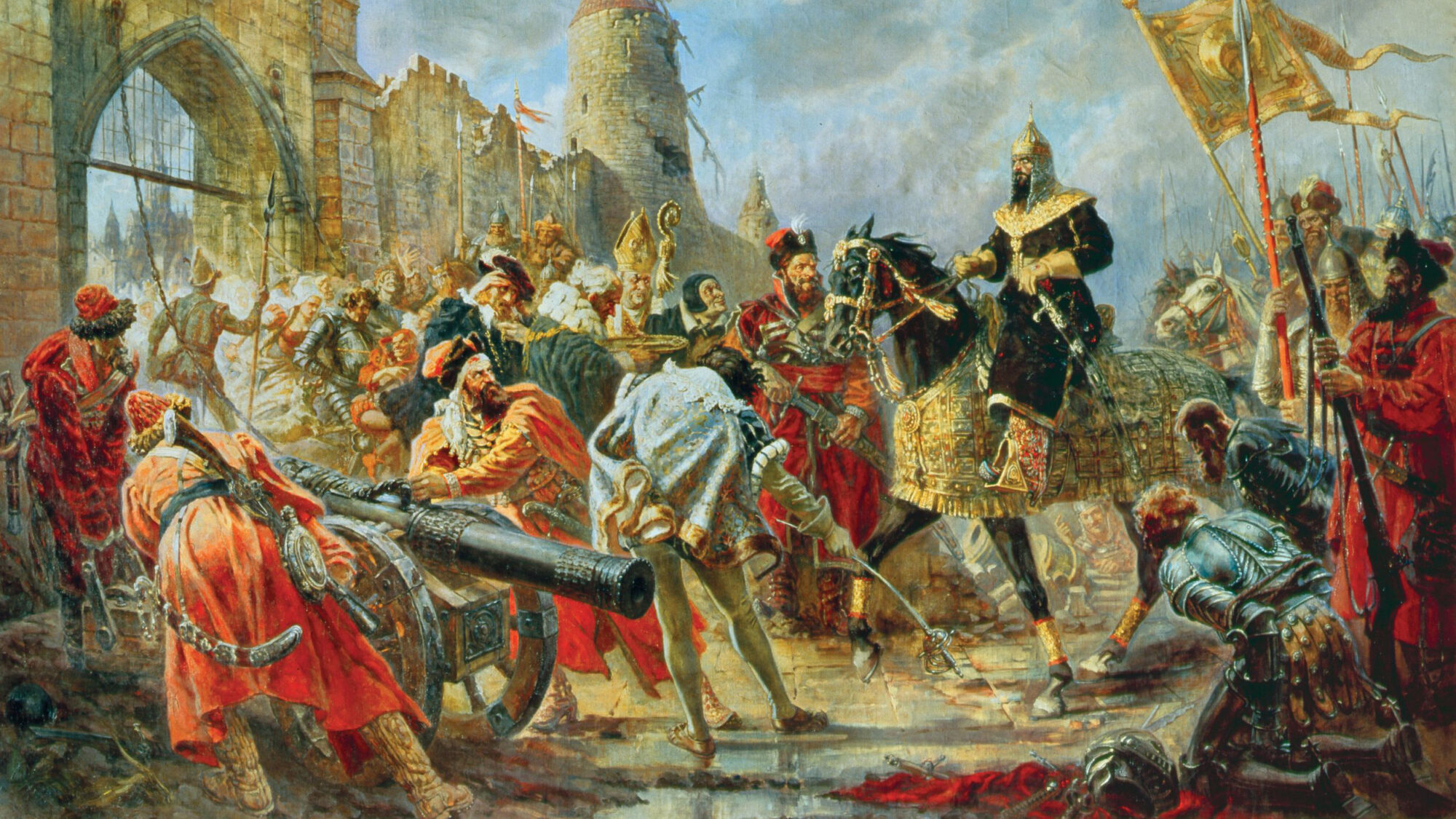
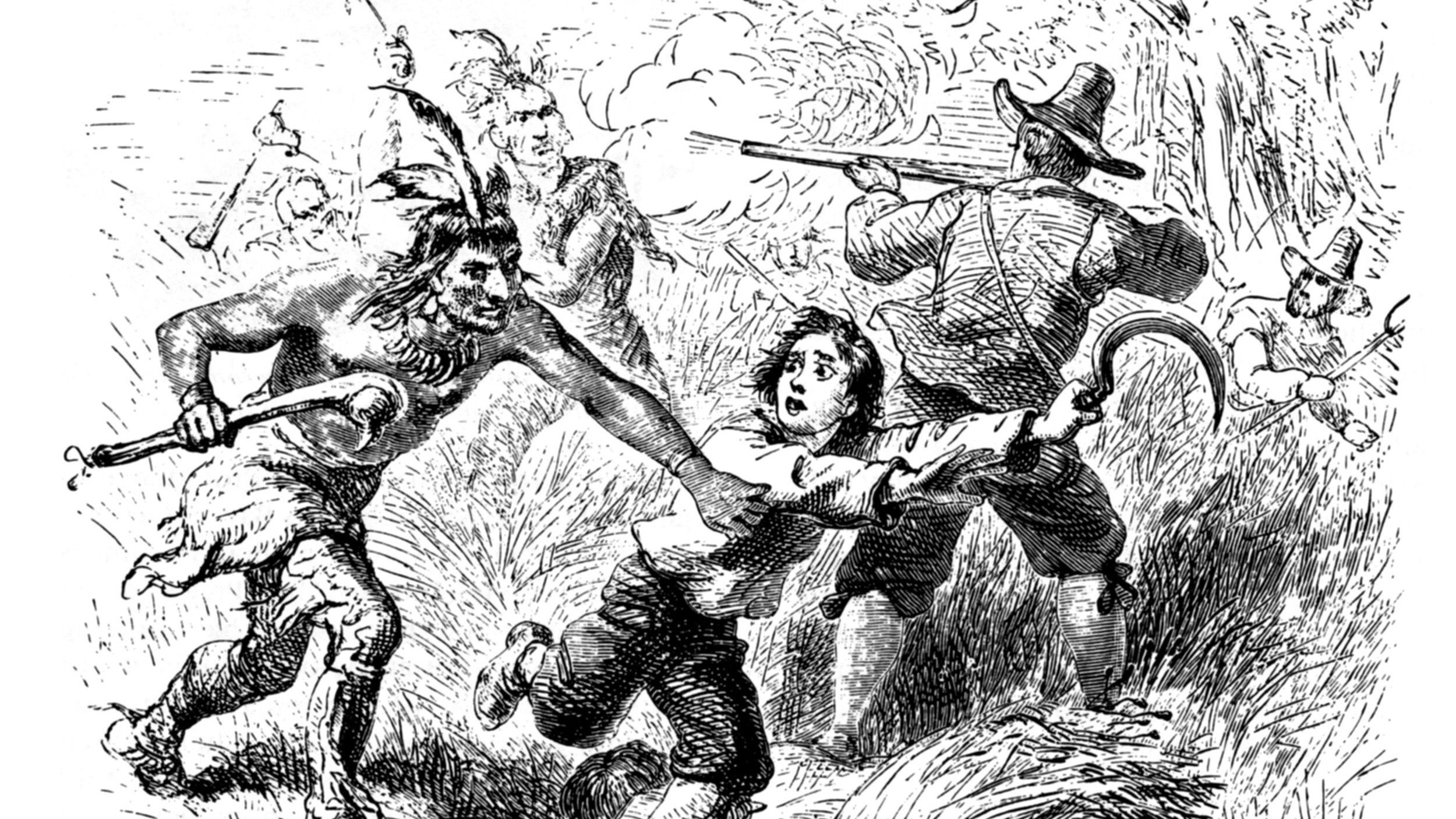
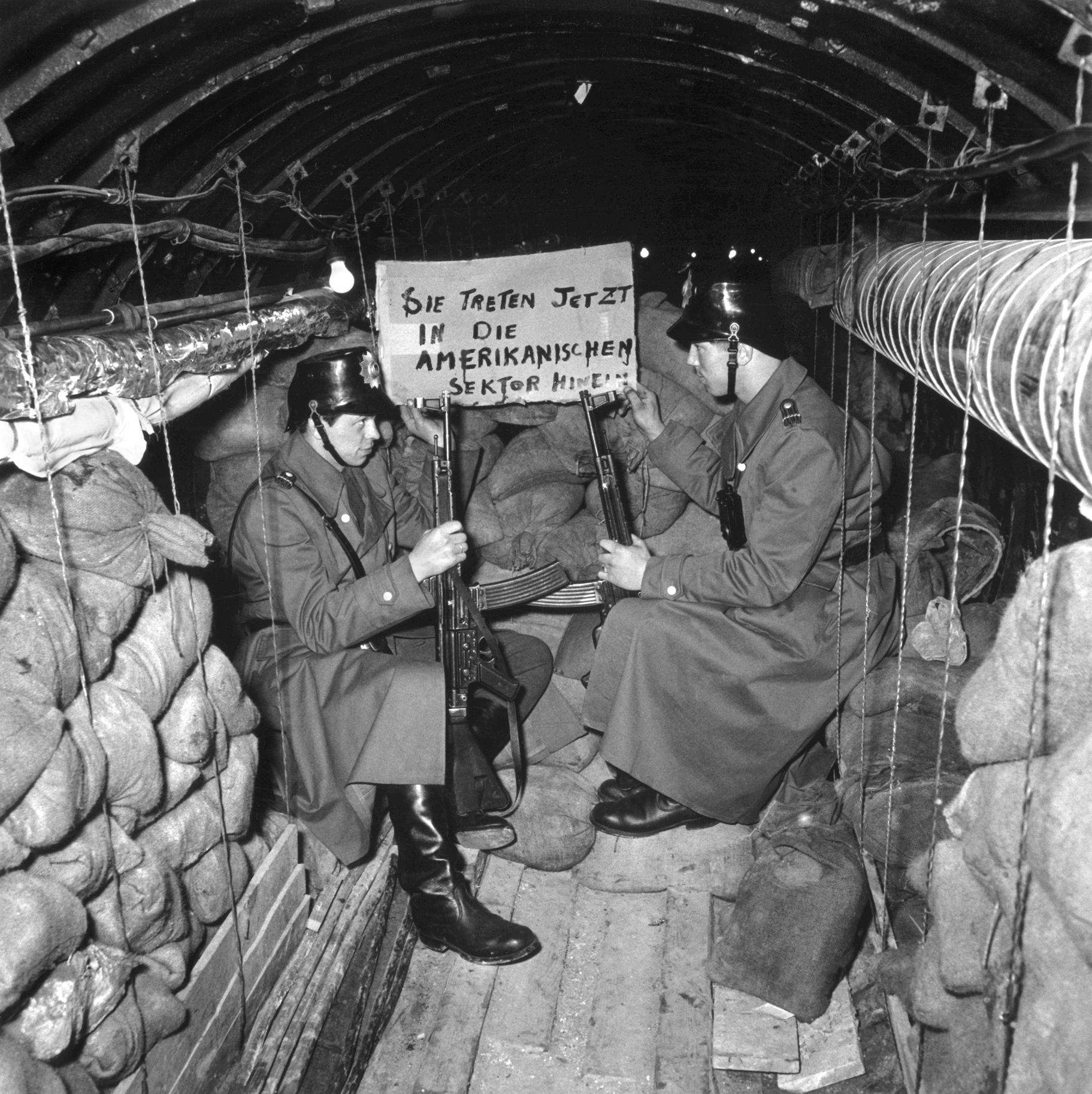
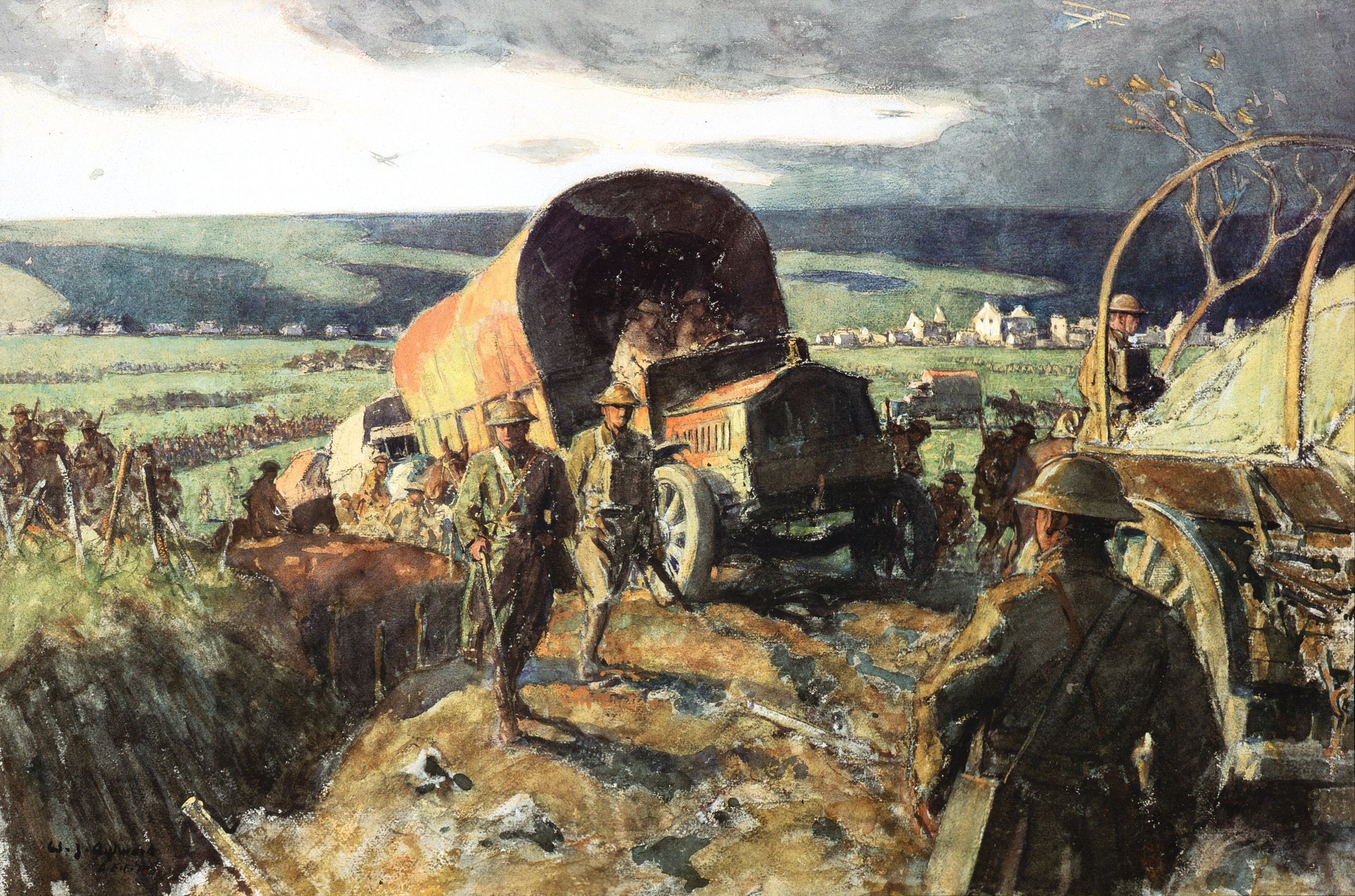
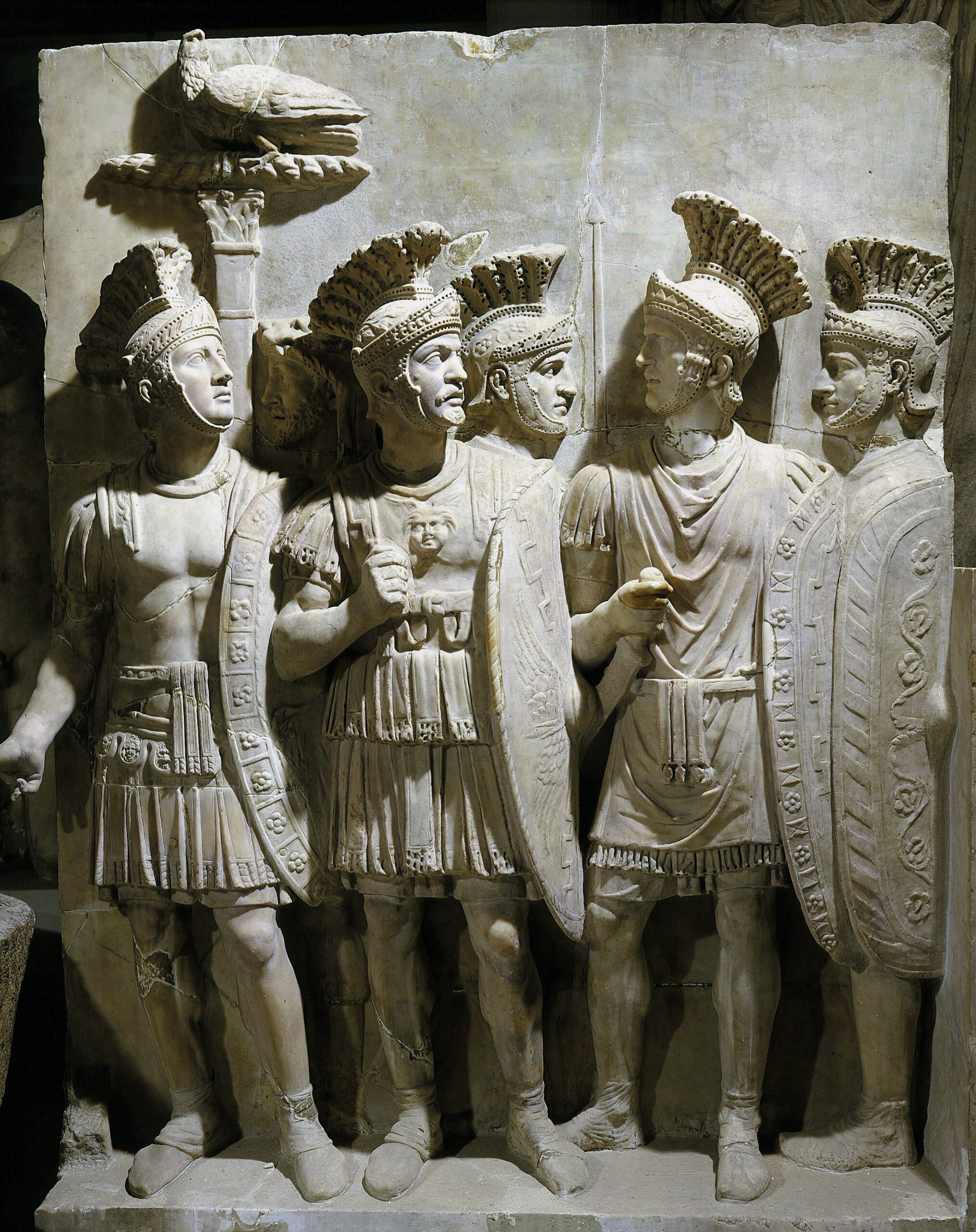
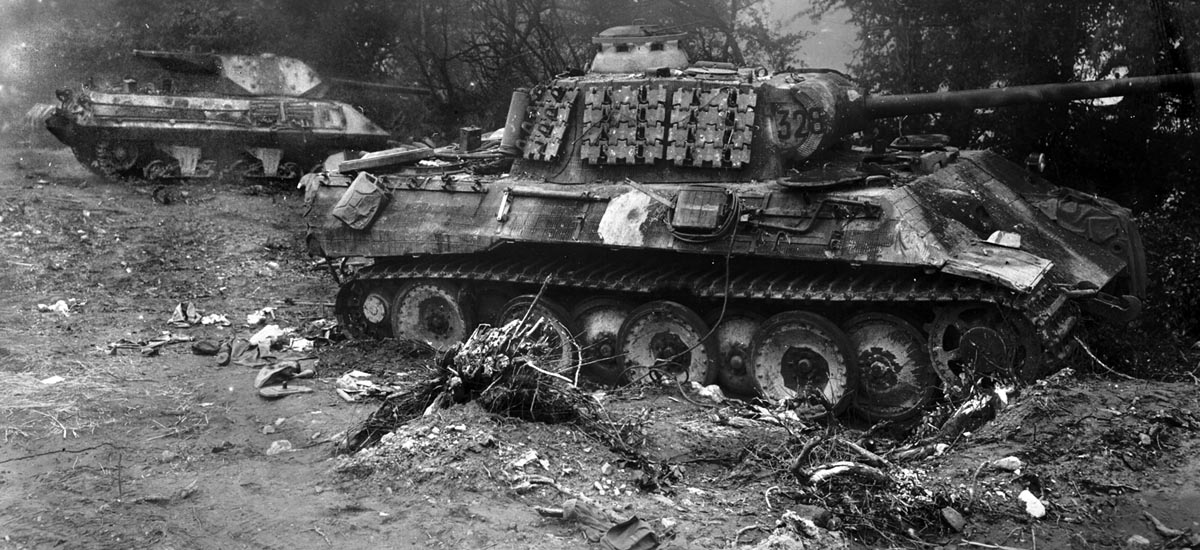
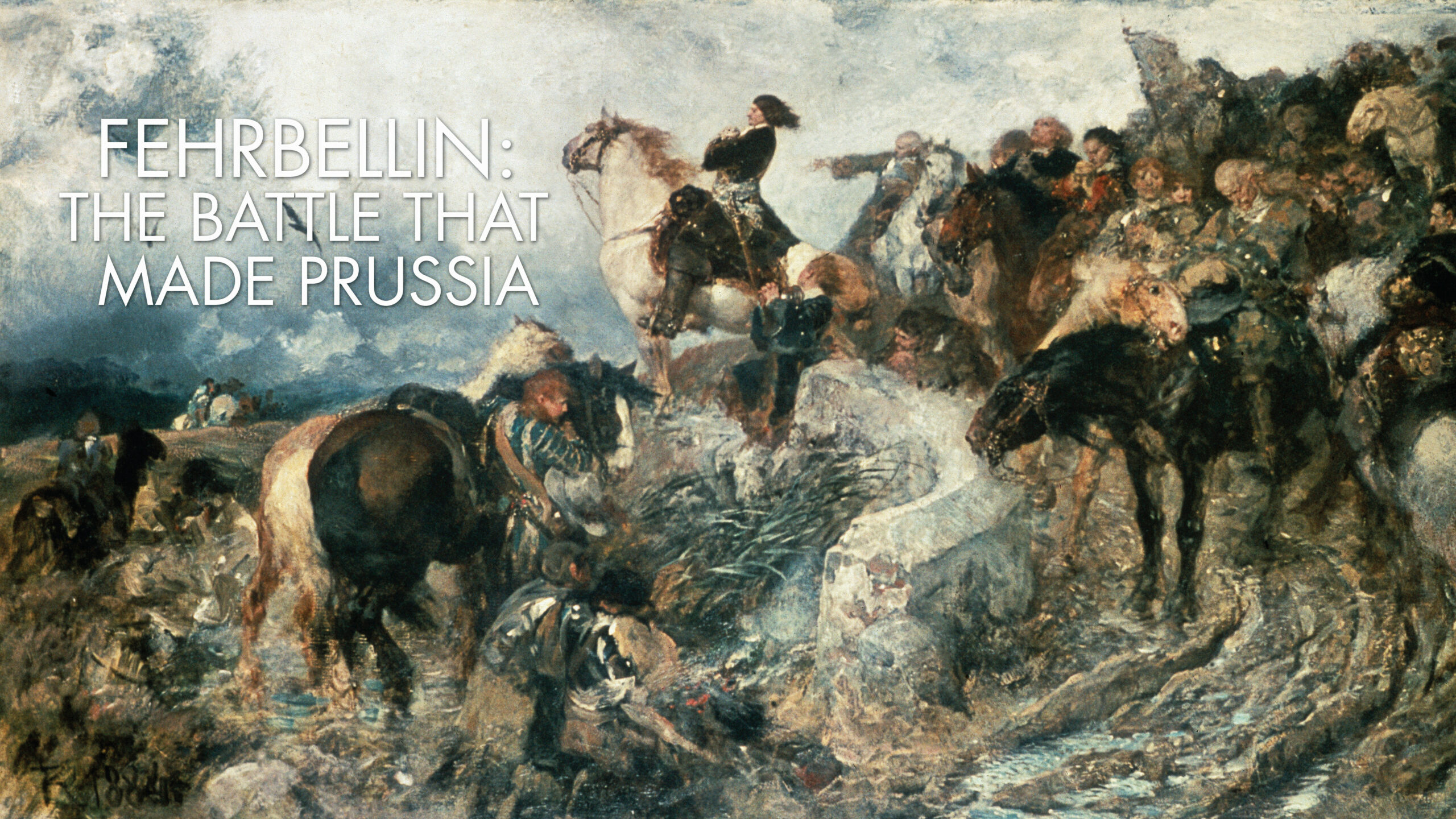

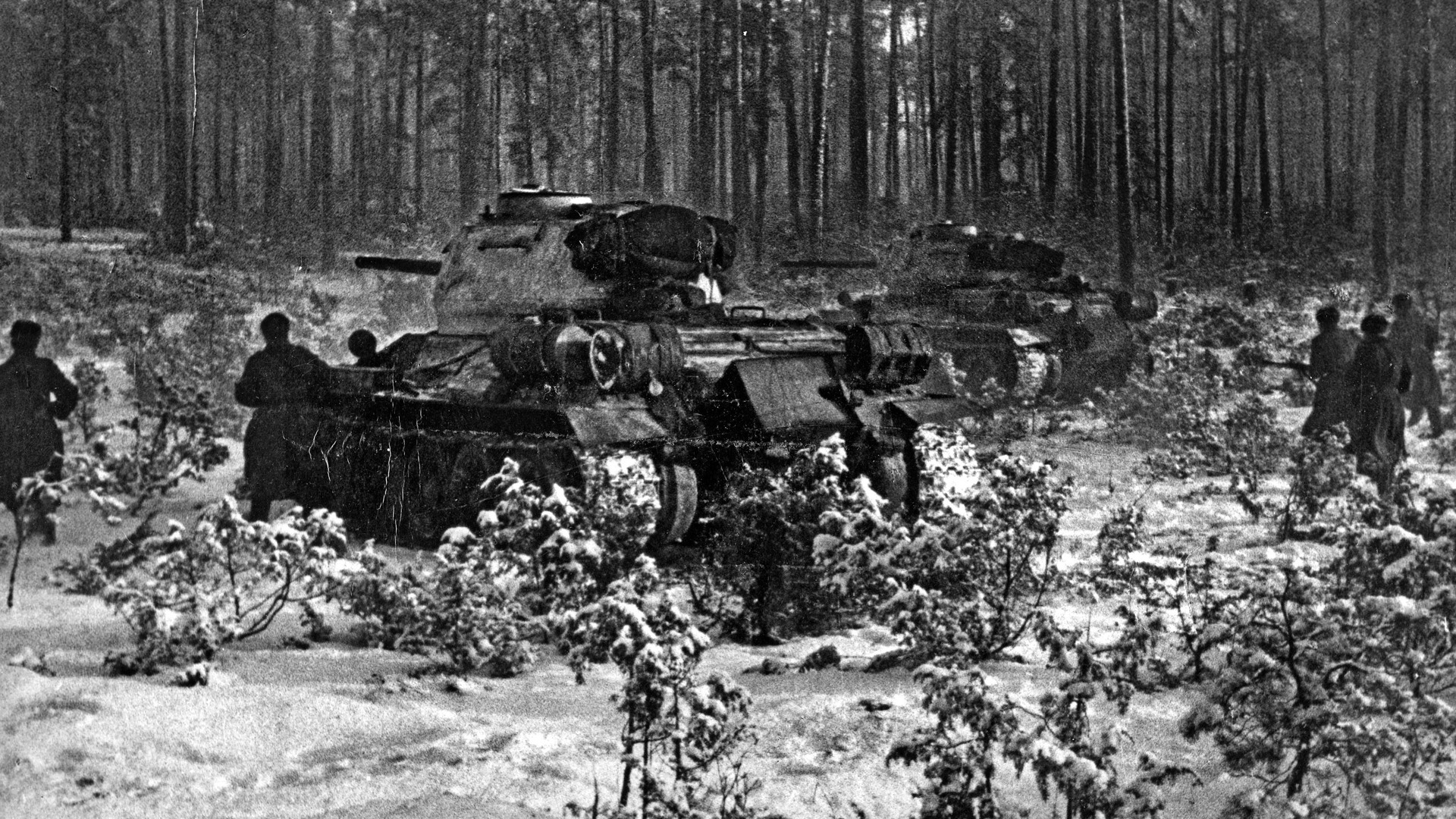
It would seem that little changes in Russia over the centuries in leadership or intrigue.